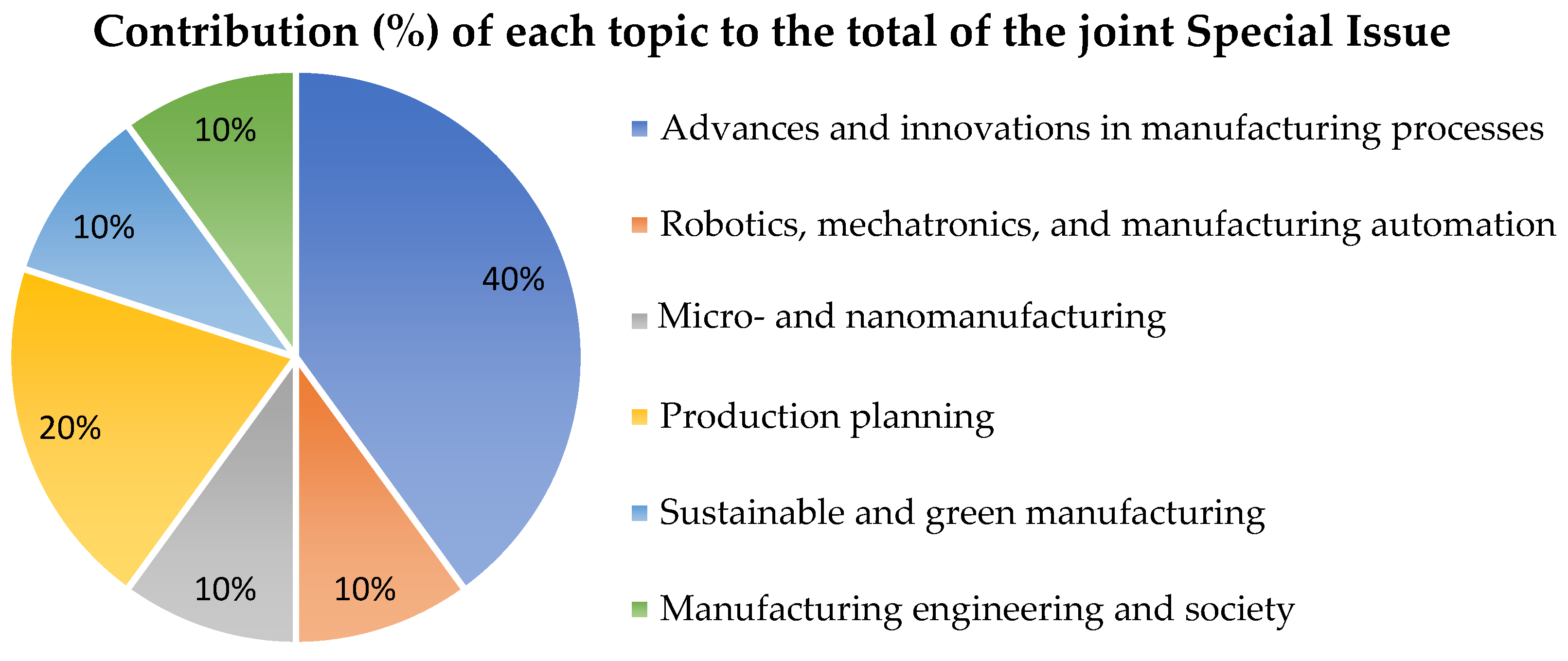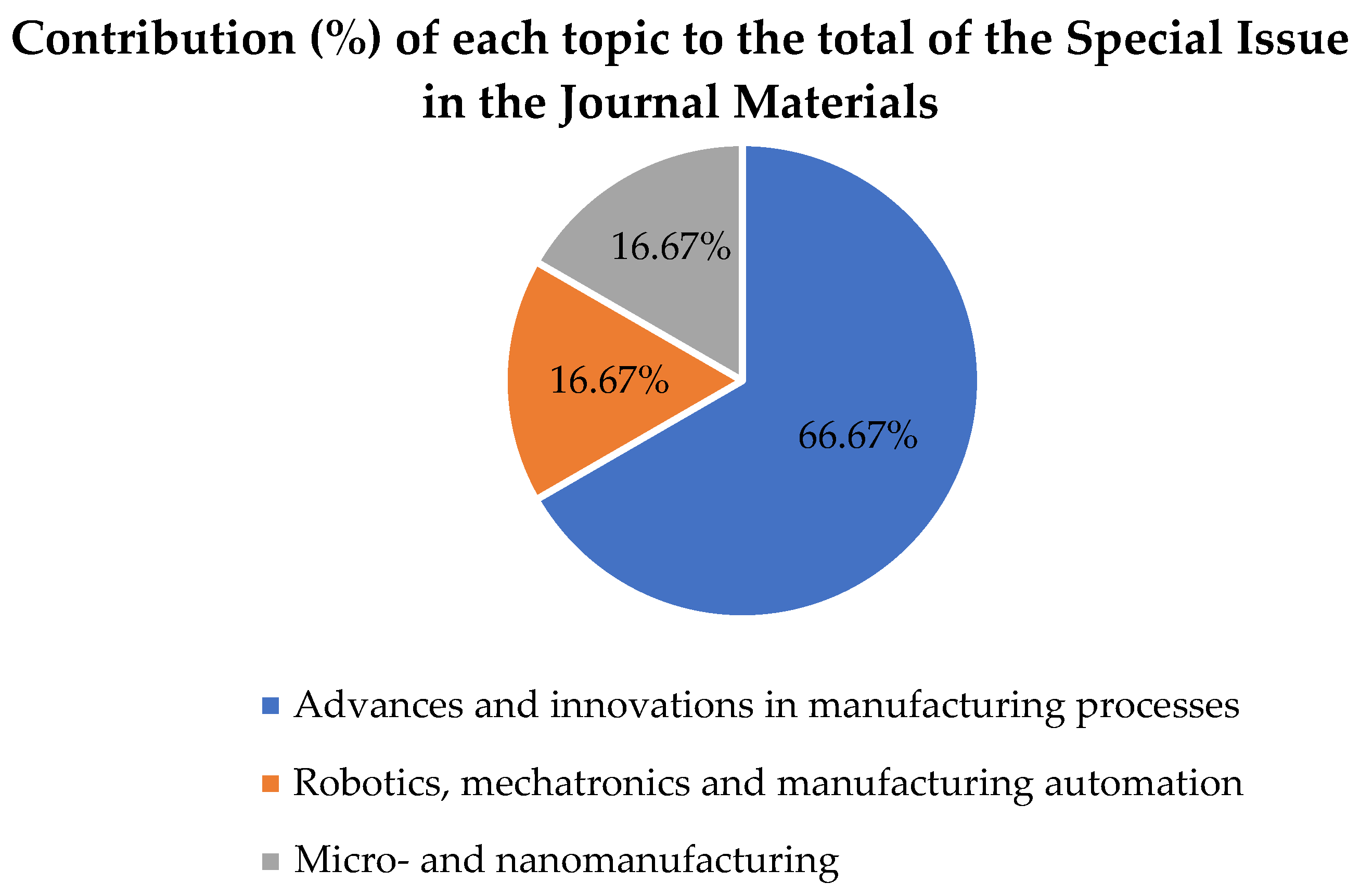Special Issue of the Manufacturing Engineering Society 2021 (SIMES-2021)
Funding
Conflicts of Interest
References
- Rubio, E.M.; Camacho, A.M. Special Issue of the Manufacturing Engineering Society (MES). Materials 2018, 11, 2149. [Google Scholar] [CrossRef] [PubMed] [Green Version]
- Rubio, E.M.; Camacho, A.M. Special Issue of the Manufacturing Engineering Society 2019 (SIMES-2019). Materials 2020, 13, 2133. [Google Scholar] [CrossRef] [PubMed]
- Camacho, A.M.; Rubio, E.M. Special Issue of the Manufacturing Engineering Society 2019 (SIMES-2019). Appl. Sci. 2020, 10, 1590. [Google Scholar] [CrossRef] [Green Version]
- Rubio, E.M.; Camacho, A.M. Special Issue of the Manufacturing Engineering Society 2020 (SIMES-2020). Materials 2021, 14, 3208. [Google Scholar] [CrossRef] [PubMed]
- Camacho, A.M.; Rubio, E.M. Special Issue of the Manufacturing Engineering Society 2020 (SIMES-2020). Appl. Sci. 2021, 11, 5975. [Google Scholar] [CrossRef]
- Trujillo, F.J.; Rodríguez-Prieto, A. Special Issue of the Manufacturing Engineering Society-2021 (SIMES-2021). Available online: https://www.mdpi.com/journal/applsci/special_issues/SIMES_21 (accessed on 12 May 2022).
- Rodríguez-Prieto, A.; Trujillo, F.J. Special Issue of the Manufacturing Engineering Society-2021 (SIMES-2021). Available online: https://www.mdpi.com/journal/materials/special_issues/SIMES_2021 (accessed on 12 May 2022).
- Sociedad de Ingeniería de Fabricación. Available online: http://www.sif-mes.org/ (accessed on 12 May 2022).
- García González, J.; Hernández-Ortega, J.J.; Jiménez-Ballesta, A.-E.; Pedreño, R.Z. Analysis of Tube-to-Tubesheet Welding in Carbon Steel Heat Exchangers of a Double Plate Header Box. Materials 2022, 15, 261. [Google Scholar] [CrossRef] [PubMed]
- Fernández, D.; Rodríguez-Prieto, A.; Camacho, A.M. Selection of Die Material and Its Impact on the Multi-Material Extrusion of Bimetallic AZ31B–Ti6Al4V Components for Aeronautical Applications. Materials 2021, 14, 7568. [Google Scholar] [CrossRef] [PubMed]
- Torres-Escobar, G.; Suárez-Bermejo, J.C.; Arenas, J.M. Compression Behavior of Hybrid Tubes for Lightweight Steel Structures. Materials 2021, 14, 6797. [Google Scholar] [CrossRef] [PubMed]
- Blanco, D.; Rubio, E.M.; Lorente-Pedreille, R.M.; Sáenz-Nuño, M.A. Lightweight Structural Materials in Open Access: Latest Trends. Materials 2021, 14, 6577. [Google Scholar] [CrossRef] [PubMed]
- Calvo, R.; Gil, P. Evaluation of Collaborative Robot Sustainable Integration in Manufacturing Assembly by Using Process Time Savings. Materials 2022, 15, 611. [Google Scholar] [CrossRef] [PubMed]
- Zamora, R.; Martínez-Pastor, J.; Faura, F. Thermal, Viscoelastic and Surface Properties of Oxidized Field’s Metal for Additive Microfabrication. Materials 2021, 14, 7392. [Google Scholar] [CrossRef] [PubMed]


Publisher’s Note: MDPI stays neutral with regard to jurisdictional claims in published maps and institutional affiliations. |
© 2022 by the authors. Licensee MDPI, Basel, Switzerland. This article is an open access article distributed under the terms and conditions of the Creative Commons Attribution (CC BY) license (https://creativecommons.org/licenses/by/4.0/).
Share and Cite
Rodríguez-Prieto, Á.; Trujillo, F.J. Special Issue of the Manufacturing Engineering Society 2021 (SIMES-2021). Materials 2022, 15, 4772. https://doi.org/10.3390/ma15144772
Rodríguez-Prieto Á, Trujillo FJ. Special Issue of the Manufacturing Engineering Society 2021 (SIMES-2021). Materials. 2022; 15(14):4772. https://doi.org/10.3390/ma15144772
Chicago/Turabian StyleRodríguez-Prieto, Álvaro, and Francisco Javier Trujillo. 2022. "Special Issue of the Manufacturing Engineering Society 2021 (SIMES-2021)" Materials 15, no. 14: 4772. https://doi.org/10.3390/ma15144772
APA StyleRodríguez-Prieto, Á., & Trujillo, F. J. (2022). Special Issue of the Manufacturing Engineering Society 2021 (SIMES-2021). Materials, 15(14), 4772. https://doi.org/10.3390/ma15144772





